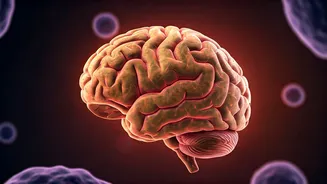The Laughter Circuit
The act of laughter is a complex interplay of various regions within the brain, orchestrated to produce the joyful response we experience when we share
a laugh. Researchers have identified several key areas involved in processing humor and producing the physical manifestations of laughter, like the motor cortex, which controls the muscles involved in facial expressions. The prefrontal cortex, which is responsible for cognitive functions, also plays a crucial role in laughter. This region assesses the context of the situation, determining if it is appropriate to laugh. When the prefrontal cortex signals that a situation is humorous, it sends signals to other regions, sparking the laughter response. The limbic system, particularly the amygdala and the hippocampus, are also activated, generating feelings of pleasure and helping us create memories associated with the laughter. Understanding the neurological pathways involved in laughter provides valuable insights into its social and emotional significance. It showcases how different parts of the brain work together to create this uniquely human experience and emphasizes the deeply interwoven connection between our minds and our capacity for joy, especially when shared.
Bonding Through Laughter
Shared laughter is more than just a pleasant experience; it plays a critical role in strengthening social bonds and creating a sense of unity between individuals. When people laugh together, it activates the release of endorphins, often referred to as the 'feel-good' chemicals, which boost feelings of pleasure and reduce stress. This shared experience creates a positive feedback loop, increasing the likelihood of further interaction and connection. Laughter acts as a signal of trust and affiliation, showcasing that individuals feel comfortable and safe in the presence of each other. This is especially important in group settings, where it helps to establish hierarchies and manage conflict. Research indicates that groups that laugh together have higher levels of cohesion and cooperation. Moreover, laughter can serve as a nonverbal cue, communicating shared values and experiences. It can also bridge gaps, offering a means to connect with others on a deeper level. Shared laughter is a biological mechanism that fosters positive social dynamics, solidifying relationships and building communities through the simple yet powerful act of sharing a chuckle.
Health Benefits Unpacked
Beyond its social advantages, laughter offers a plethora of benefits for our overall health and well-being. Studies have shown that laughter can significantly reduce stress levels by lowering the production of cortisol, a stress hormone. It also stimulates the immune system, leading to an increase in the production of infection-fighting cells, making us less vulnerable to illnesses. Furthermore, laughter acts as a natural pain reliever. It triggers the release of endorphins that have analgesic effects, reducing the perception of pain. Laughter also promotes cardiovascular health. It increases blood flow, improving the function of blood vessels and lowering blood pressure. Regular doses of laughter have also been linked to improvements in mood and reduced symptoms of depression and anxiety. Whether it's a hearty chuckle or a gentle giggle, the simple act of laughing can have far-reaching effects on our physical and mental states. It serves as a natural form of medicine, improving both our emotional landscape and physiological health.
Laughter in Practice
Incorporating laughter into daily life doesn't require complex strategies. There are simple yet effective ways to increase opportunities for laughter. Seeking out humorous content, such as comedy shows, funny movies, or lighthearted books, can provide regular triggers for laughter. Making time for social interaction, particularly with friends and family, creates an environment where laughter can flourish naturally. Engaging in activities that bring joy and amusement, such as playing games, can also stimulate laughter. Additionally, practicing mindfulness and cultivating a positive outlook on life can make it easier to find humor in everyday situations. Laughter yoga, which combines laughter exercises with deep breathing, is another method to consciously induce laughter, irrespective of external stimuli. Making laughter a regular element of daily routines can significantly improve overall well-being. Embracing humour, engaging in joyful activities, and connecting with others are simple practices that can enhance both physical and mental health.













